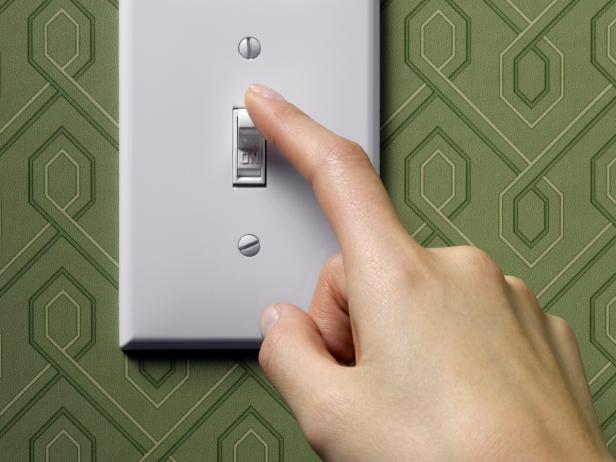Lighting Controls

Jeffrey Hamilton
Just as new technology is creating many options for light bulb types, it is also transforming the world of lighting control. From the familiar toggle to the newest dimmers and keypads, there's more than one way to turn the lights on and off.
Switches
After decades as the ubiquitous light switch, the toggle (invented in 1916) is being eclipsed by several higher-tech choices. The rocker operates essentially in the same manner as the toggle, but offers a broader surface for pushing on and off; both toggles and rockers are examples of snap-action control, with springs and levers activated to complete or interrupt the flow of electricity to the lighting fixture.
Occupancy sensors and timers may also be installed for residential use, although to date they have been more common in public facilities. In most homes, one switch is installed for every built-in lighting fixture; electrical outlets may also be wired to a switch. The drawback of switches is what some architects refer to as "wall acne," which occurs when six or eight switches in a row are lined up along a wall, in a great room situation, for example.
Keypad systems (see below) have become a solution to that problem. Even a bank of just three or four switches can cause confusion to the homeowner who may inadvertently switch the wrong light on or off.
Dimmers
Lighting experts are unanimous in their praise of dimmers. "Dimming is the best way to get the most bang for your buck," says lighting designer Lana Nathe. "If you dim your lights 10 percent, you double the life of an incandescent bulb, and save energy too." Once reserved for dining room chandeliers, dimmers are increasingly common for every layer of lighting—ambient, task, and accent—in every room of the house.
Replacing a standard toggle or rocker switch with a dimmer switch is a fairly simple project, within the ability of an electricity-savvy homeowner. With a small time investment, plus the $30 for the dimmer switch, a homeowner can quickly start saving in electricity cost and light bulb replacement, and create various moods by taking the brightness up or down.
Most of the dimmers in households today were designed to work with incandescent light bulbs; when used with dimmable CFL or LED light bulbs, they often cause the light to flicker instead of dim gradually or stop dimming completely at the halfway point. Replace your existing switches and dimmers with products that work with newer light bulb technology. Lutron's "C.L Dimmers" series (C for compact fluorescent, L for LED), for example, is one such product.
Lighting Control
See All PhotosKeypad Systems
Any room that has three or four wall switches in a row is a candidate for a keypad system. "You definitely don't want a bank of eight or twelve switches, and I even suggest a keypad when you have more than four switches," says lighting designer Jody Pritchard. A keypad system operates on wireless technology, with various lighting permutations programmed into the system by a lighting designer or qualified installer.
For example, a keypad at every entry point to a great room-kitchen-TV area might include these keypad buttons:
- Cooking: Pushing this button illuminates the task lighting above the prep and oven areas
- Reading: Pushing this button illuminates the task lamp next to the homeowner's favorite reading chair
- Movie: Pushing this button illuminates a dim kitchen light, and nothing else
- All Off: Pushing this button ensures all the lights are off, helpful before you leave the house or head to bed
In addition to convenience, keypad systems offer the possibility of remote operation of the lighting as the wireless technology can be adapted for smartphone, laptop or tablet control. Many keypad systems are scalable, meaning other aspects of home automation (window shades, thermostat, appliances) can be programmed into the system as well. One such system is Lutron's RadioRa2, which starts at about $5,500 for an entire house; the company's website provides contact information for local lighting designers or qualified installers.







































